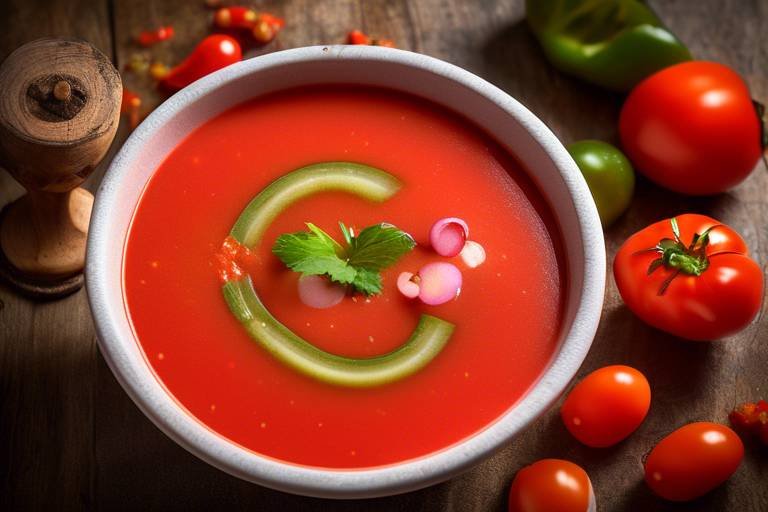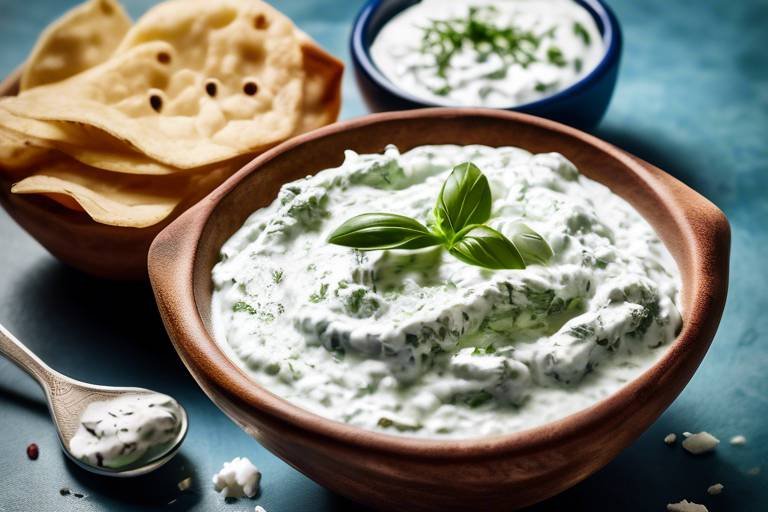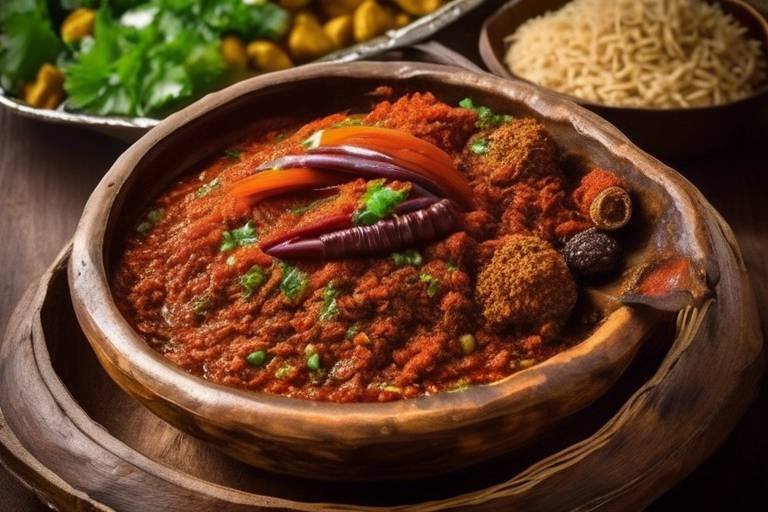Discovering the Rich Flavors of Spanish Gazpacho
When it comes to culinary delights that pack a punch of flavor and a burst of color, Spanish Gazpacho stands in a league of its own. This traditional cold soup is a tantalizing blend of fresh ingredients that come together to create a refreshing and vibrant dish that is perfect for hot summer days. Let's dive into the world of Gazpacho and uncover the secrets behind its rich flavors.

History of Gazpacho
Gazpacho, the beloved cold soup originating from Spain, has a rich history that traces back to ancient times. Its roots can be found in the Andalusian region, where it was first created by farmers and shepherds as a simple and nourishing meal. Originally, Gazpacho was made with a mixture of stale bread, olive oil, water, vinegar, and garlic, reflecting the humble origins of this iconic dish. Over time, as tomatoes, peppers, and cucumbers were introduced to Spain from the Americas, they became key ingredients in the evolution of Gazpacho. The dish gained popularity in the 19th century, spreading beyond Andalusia to become a staple in Spanish cuisine, especially during the scorching summer months. Today, Gazpacho is celebrated not only for its refreshing taste but also for its cultural significance, embodying the essence of Spanish culinary tradition.

Key Ingredients
When it comes to creating the vibrant and refreshing flavors of Spanish Gazpacho, the key ingredients play a crucial role in shaping the dish's unique taste profile. Each component contributes to the overall harmony of flavors, creating a symphony of taste that delights the palate.
At the heart of Gazpacho lies ripe tomatoes, the star ingredient that forms the base of this cold soup. Their juicy sweetness and tanginess provide the foundational flavor that defines Gazpacho. Alongside tomatoes, cucumbers, bell peppers, onions, and garlic add depth and complexity to the dish, infusing it with layers of savory goodness.
Additionally, the use of high-quality olive oil and vinegar not only enhances the texture of Gazpacho but also brings a delightful sharpness and richness to the soup. The inclusion of bread, often used as a thickening agent, adds a subtle earthy note that ties all the ingredients together harmoniously.
Each ingredient in Gazpacho serves a specific purpose, contributing its own distinct flavor profile to create a well-balanced and refreshing dish that captures the essence of Spanish culinary tradition.

Tomatoes: The Heart of Gazpacho
Tomatoes are undeniably the star of Gazpacho, playing a crucial role in defining the soup's vibrant flavor profile. These juicy and ripe fruits bring a burst of freshness to the dish, infusing it with a tangy sweetness that is both invigorating and satisfying. When it comes to selecting the perfect tomatoes for Gazpacho, the variety you choose can significantly impact the overall taste. Whether opting for plump and juicy heirloom tomatoes or the intense sweetness of cherry tomatoes, each type adds its unique essence to the mix.

Regional Variations
When it comes to Gazpacho, the beauty lies in its versatility across different regions of Spain. Each area puts its own unique spin on this traditional cold soup, resulting in a diverse range of flavors and ingredients that reflect the local culinary heritage. From the classic Andalusian Gazpacho to the innovative variations found in Catalonia and Madrid, exploring the regional adaptations of this beloved dish is a culinary adventure in itself.
In Andalusia, the birthplace of Gazpacho, you'll find the quintessential version of this cold soup. Made with ripe tomatoes, cucumbers, bell peppers, onions, garlic, olive oil, and vinegar, Andalusian Gazpacho embodies the essence of traditional Spanish cuisine. The simplicity of its ingredients combined with the skillful balance of flavors creates a refreshing and satisfying dish that is perfect for hot summer days.
Traveling to the northern regions of Spain, such as Catalonia, you may encounter Gazpacho recipes that incorporate local fruits like apples or grapes for a sweet and tangy twist. Seafood lovers in coastal areas like Valencia might enjoy Gazpacho with added shrimp or crab, elevating the dish with a touch of the sea. Inland regions like Castilla-La Mancha may surprise you with Gazpacho recipes featuring almonds for a rich and creamy texture.
Despite these regional variations, one thing remains constant – the vibrant colors and fresh flavors that define Gazpacho as a beloved Spanish culinary tradition. Whether you prefer the traditional Andalusian recipe or are eager to explore new interpretations, each regional variation offers a unique gastronomic experience that celebrates the rich diversity of Spanish cuisine.

Traditional Preparation Methods
When it comes to preparing traditional Gazpacho, there are several key techniques that contribute to the dish's authentic flavors and textures. One of the fundamental steps in making Gazpacho is the process of blending. This involves combining all the fresh ingredients such as tomatoes, cucumbers, bell peppers, onions, and garlic in a blender until they form a smooth, velvety consistency.
Another crucial method is straining the blended mixture. This step helps remove any remaining solids, resulting in a silky and refined soup. By straining the Gazpacho, you achieve a more elegant texture that enhances the overall dining experience.
After blending and straining, it is essential to chill the Gazpacho thoroughly. Allowing the soup to rest in the refrigerator for a few hours not only enhances the flavors but also ensures that it is served at the perfect temperature. Chilling the Gazpacho allows the ingredients to meld together, creating a harmonious balance of flavors.

Serving and Pairing
When it comes to serving Gazpacho, the options are as diverse as the flavors of this traditional Spanish dish. From the classic chilled bowl presentation to more modern and creative ways, Gazpacho offers a versatile canvas for culinary artistry. Imagine serving this vibrant soup in elegant shot glasses at a summer soirée, adding a touch of sophistication to your gathering. The contrast of the colorful Gazpacho against the transparent glass creates a visually stunning appetizer that is sure to impress your guests.
Pairing Gazpacho with complementary flavors can elevate the dining experience to new heights. The light and refreshing nature of the soup makes it a perfect match for a variety of accompaniments. Consider serving Gazpacho with a crisp white wine, such as a Sauvignon Blanc or a Spanish Albariño, to enhance the overall taste profile. The acidity of the wine complements the tangy flavors of the soup, creating a harmonious balance on the palate.
For a more casual pairing, enjoy Gazpacho with a side of crusty bread or a selection of Spanish cheeses. The combination of the soup's fresh ingredients with the rich and savory notes of the cheese creates a delightful contrast of textures and flavors. Additionally, grilled seafood, such as shrimp or octopus, can be a delicious accompaniment to Gazpacho, adding a protein-rich element to the meal while maintaining a light and summery feel.

Health Benefits
Uncover the nutritional advantages of Gazpacho, a dish rich in vitamins, antioxidants, and hydration. Gazpacho is a powerhouse of nutrients, thanks to its key ingredients like ripe tomatoes, cucumbers, and bell peppers. These vegetables are packed with essential vitamins such as vitamin C and vitamin A, known for their immune-boosting properties and skin benefits.
Moreover, the olive oil used in Gazpacho is a source of healthy fats that are beneficial for heart health. The garlic and onions not only add flavor but also offer potential health benefits, including anti-inflammatory and antibacterial properties. The inclusion of vinegar provides a tangy kick while potentially aiding digestion and blood sugar control.
One of the standout health benefits of Gazpacho is its hydrating properties. With its high water content from ingredients like tomatoes and cucumbers, Gazpacho helps keep you hydrated, especially during hot summer days. Staying hydrated is essential for overall well-being, and Gazpacho offers a delicious way to boost your fluid intake.
Frequently Asked Questions
- What is Gazpacho?
Gazpacho is a traditional Spanish cold soup known for its refreshing taste and vibrant colors. It is typically made with ingredients like ripe tomatoes, cucumbers, bell peppers, onions, garlic, olive oil, vinegar, and bread, blended together to create a delicious and nutritious dish.
- How is Gazpacho served?
Gazpacho can be served in various ways, from a chilled bowl as a starter to a shot glass for a modern twist. It is often garnished with diced vegetables, croutons, or a drizzle of olive oil. Pairing options include wine, bread, cheeses, or grilled seafood to complement the flavors of the soup.
- What are the health benefits of Gazpacho?
Gazpacho offers numerous health benefits as it is rich in vitamins, antioxidants, and hydration. The fresh ingredients used in Gazpacho contribute to a healthy diet, making it an ideal choice for a light and nutritious meal, especially during hot summer days.



















